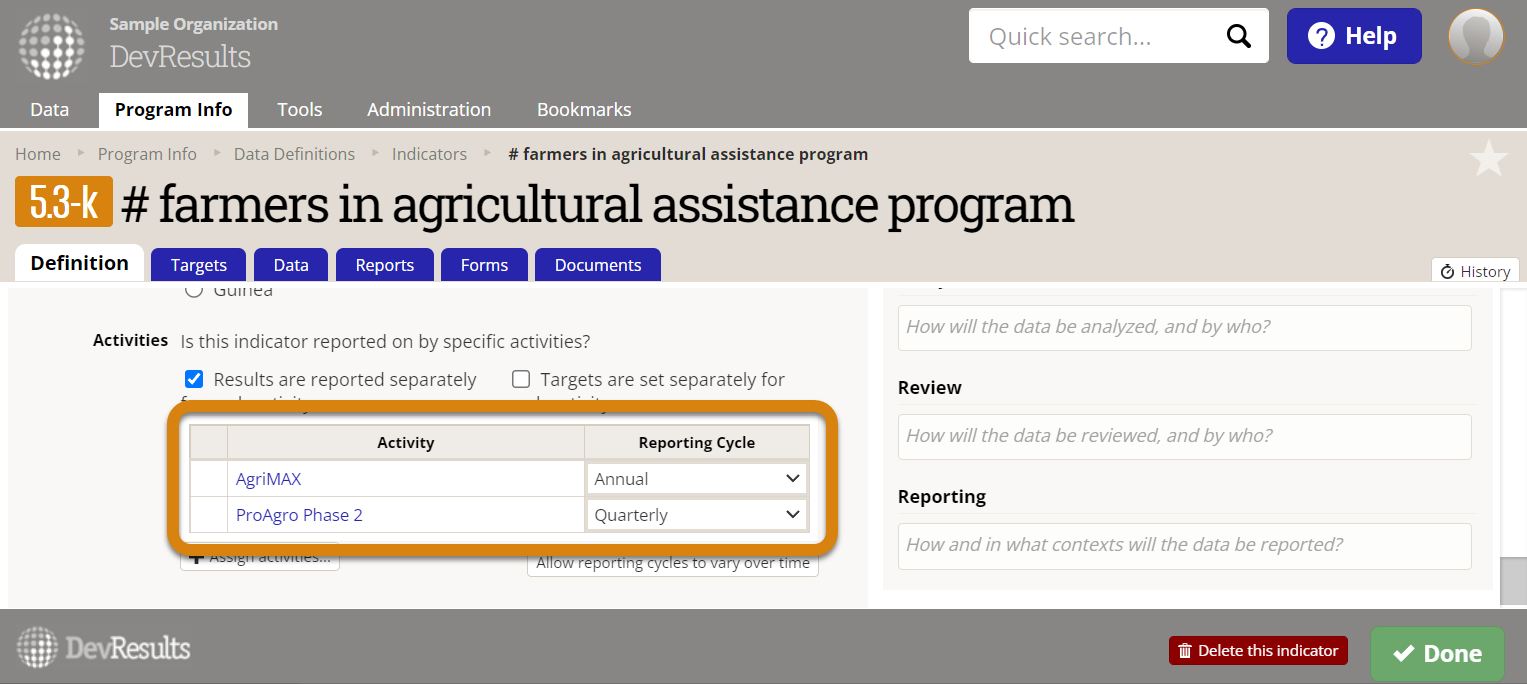When an indicator's results are calculated from a data table, rows of the data table get assigned to a reporting period based on:
- The date in the data table row (in the column defined as the indicator's date column)
- The project referenced in the row (and the reporting cycle assigned to the project for that indicator)
For example, consider the indicator below.
- The date column for this indicator is defined as the Date Entered Program column from the data table.
- One project reports this data annually, and the other quarterly.
This is where the indicator's date column is defined:

This is where the reporting cycle is defined for each project that reports on the indicator:

For this table, one farmer would be counted for the 2023 Annual reporting period for the AgriMax project. One farmer would be counted for the 2023 Q2 reporting period for the ProAgro Phase 2 project (if the fiscal year starts in October).

If your indicator is defined using the count unique sets calculation, and you do not including the date in the count unique columns list, then data will be associated with the latest date from the date column for the rows relevant to this indicator. Why?
Count unique sets is used to deduplicate rows of data, like if you train someone twice but want to count them once. In that scenario, one trainee would be associated with two dates. So which would be used to assign the reporting period for counting that trainee? DevResults resolves this issue by assigning the most recent relevant date to the data for that indicator.
Didn't answer your question? Please email us at help@devresults.com.